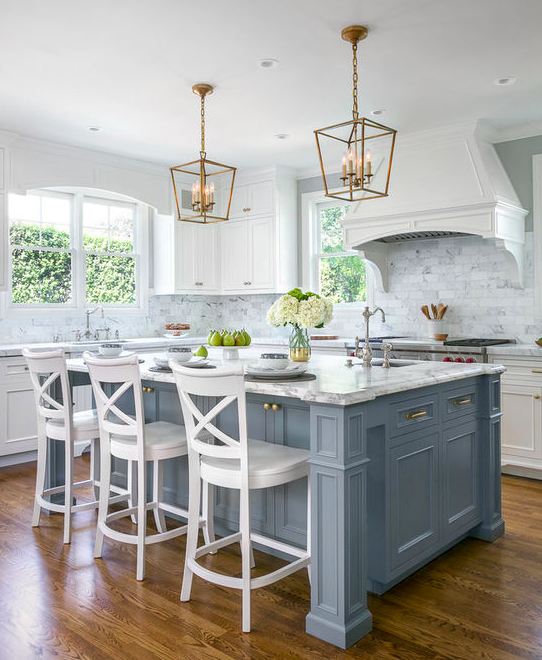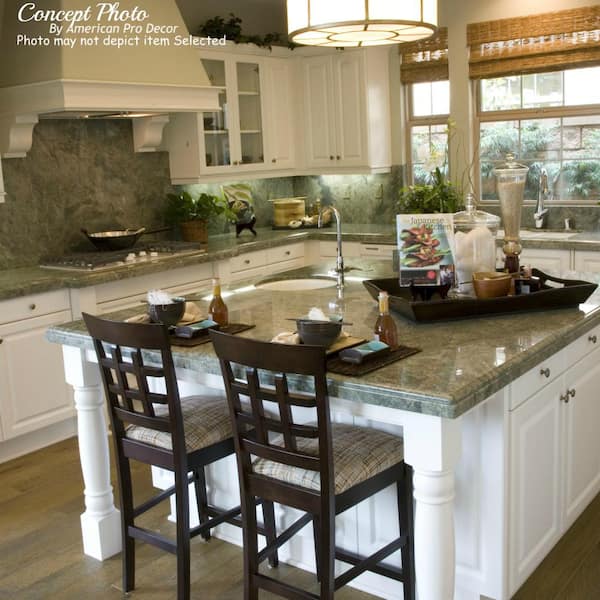Exactly How to Select the Perfect Kitchen Area Island Leg to Improve Your Cooking Area Design
Choosing the perfect kitchen island leg is a nuanced process that requires careful consideration of numerous elements such as style style, functionality, and material. A well-chosen leg can not only sustain the structure yet also serve as a specifying component that boosts the total aesthetic of your cooking area.
Assess Your Cooking Area Style
When it pertains to selecting a kitchen area island leg, it's vital to evaluate your cooking area design to make certain a cohesive layout. The cooking area is typically the heart of the home, and the island acts as a visual and functional prime focus. The selection of leg design need to mirror the total motif of your kitchen, whether it be modern-day, typical, farmhouse, or industrial.
As an example, in a contemporary kitchen area, smooth, straight legs in a minimalist style may enhance the structured appearance. On the other hand, a rustic kitchen area might take advantage of hefty, transformed legs that convey warmth and character. Think about elaborately developed legs that echo traditional craftsmanship. if your kitchen features a classic style.
Pay attention to the proportions of both the island and the surrounding area; the leg's scale must enhance the general dimensions. By straightening your leg selection with your kitchen's style, you develop a merged and inviting environment that reflects your individual aesthetic.
Take Into Consideration Product Options
Choosing the appropriate product for your kitchen area island leg is crucial, as it affects both resilience and aesthetic charm. Various materials offer distinctive advantages and can considerably influence the overall design of your kitchen.
Wood is a popular selection, recognized for its warmth and versatility. It can be stained or painted to match your kitchen area's color design, offering an ageless appearance. It might require more upkeep to avoid damage from moisture and warmth.
Metal legs, such as stainless steel or functioned iron, evoke a commercial and modern-day feeling. They are extremely sturdy and resistant to damage, making them ideal for high-traffic locations. Steel can likewise be finished in different methods, allowing for modification in regards to structure and shade.
An additional choice is composite products, which integrate aesthetic appeals with practicality. These can resemble the look of wood or metal while frequently being lighter and less complicated to keep.
Last but not least, take into consideration stone legs, which can bring a luxurious touch however might require added architectural assistance. Each product has its unique features, so it's vital to select one that lines up with your cooking area's overall style vision while guaranteeing durability and capability.
Explore Design Features
Numerous design functions can improve the capability and aesthetic appeal of a cooking area island leg, making it an essential part of the overall kitchen area layout. One essential facet to consider is the style of the leg, which can vary from conventional turned designs to smooth, contemporary lines. The selection of design should enhance the existing cabinets and components, creating a natural look.
Along with style, the coating of the leg can substantially influence the kitchen's aesthetic charm. Alternatives such as painted, tarnished, or all-natural coatings can either highlight the leg as a declaration piece or permit it to blend effortlessly right into the kitchen area atmosphere. Ornamental aspects, such as carvings or decorations, can additionally add personality and uniqueness, transforming a simple leg right into a focal point.
Furthermore, incorporating useful attributes like open shelving or incorporated storage can improve utility while maintaining aesthetic worth. The interaction of these layout includes not only elevates the cooking area island leg's look but likewise adds to the total performance of the kitchen room. By attentively selecting these aspects, home owners can ensure their kitchen area island leg offers both decorative and useful purposes.
Determine Size and Elevation

Typically, the common height for kitchen island legs is around 30 inches, which aligns with the elevation of common countertops and eating surface areas. Nonetheless, if your island serves a double objective, such as a breakfast bar, you might take into consideration a higher leg measuring 36 inches. This height advertises an extra laid-back dining experience and suits bar feceses comfortably
In regards to width, the leg ought to not just their website provide adequate assistance yet also keep aesthetic balance. A size of 3 to 5 inches is usually ideal, enabling enough security without overpowering the total design. In addition, take into consideration the spacing between the legs; they must be positioned to allow for very easy motion and accessibility around the island.
Inevitably, taking precise dimensions and considering the planned use of the cooking area island will guide you in choosing the suitable size and height of the legs, guaranteeing both visual charm and practical click here for more functionality in your kitchen area design. kitchen island leg.
Budgeting for Your Choice

Following, determine the design that aligns with your kitchen area's aesthetic. Custom-made legs may come with a costs, while pre-fabricated choices typically use expense financial savings. It's vital to stabilize your wanted visual with the functionalities of your budget plan.
Think about added costs that might develop, such as installation or completing. If you're intending to work with a specialist for installment, include these expenses in your spending plan.
Lastly, designate a contingency fund for unanticipated costs that might occur during the improvement. By very carefully reviewing these factors, you can make informed decisions that not only boost your kitchen area's style but additionally maintain your improvement within economic reach. A tactical budget will ensure that you achieve the desired appearance without jeopardizing your monetary objectives.
Conclusion
To conclude, picking the optimal kitchen island leg requires mindful factor to consider of numerous aspects, including the overall kitchen style, product choices, layout functions, and proper dimensions. By lining up these aspects with the wanted visual and performance, a aesthetically enticing and unified cooking area island can be accomplished. Additionally, budgeting for the selected products and installation will make sure that the option procedure remains useful and viable, inevitably enhancing the kitchen's style and functionality.
When it comes to choosing a cooking area island leg, it's essential to examine your kitchen design to guarantee a cohesive style.Numerous design features can improve the capability and aesthetic charm of a cooking area island leg, making it an important component of the total his comment is here kitchen area style. The interplay of these layout features not only raises the kitchen island leg's look but additionally adds to the overall functionality of the cooking area space.Establishing a budget for your kitchen island leg is an essential step that can dramatically impact your total cooking area remodelling expenses.In conclusion, selecting the excellent cooking area island leg necessitates careful consideration of numerous factors, including the general cooking area design, product alternatives, design functions, and ideal measurements.